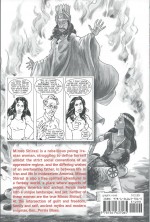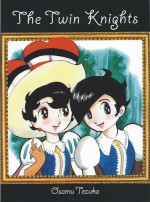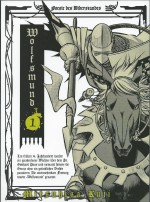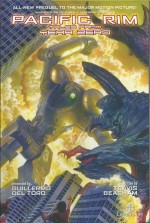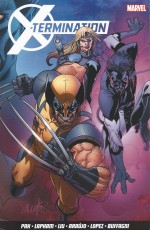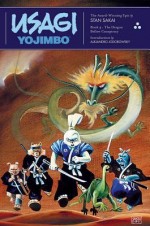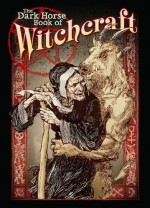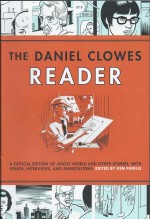
By Daniel Clowes, with Ken Parille & various (Fantagraphics Books)
ISBN: 978-1-60699-589-1
One of the greatest assets of the comics medium is the ostensibly straightforward nature of its storytelling. With pictures wedded to text, what you see is so clearly what you get. So whenever a master creator regularly, consciously and deliberately subverts that implicit convention the result might be occasionally obscure or confusing, but always utterly engrossing.
At the forefront of comics storytelling for nearly three decades, Daniel Clowes is, for many, an acquired taste. However, once he’s in your brain there’s certainly no shaking the things he can do with pen and ink, motive, character and the special kind of targeted situational magic that inhabits the world of pictures and words in static harmony.
Born in Chicago in 1961, Clowes began his career as a cartoonist with humour magazine Cracked before creating uniquely skewed short comic tales for Fantagraphics. His first piece debuted in Love and Rockets # 13 (September 1985), an introductory prelude to his retro-chic detective magazine Lloyd Llewellyn which launched soon after, running in various incarnations for three years.
In 1989 he created personal anthology vehicle Eightball and began producing a variety of tales – short and serial-length – spanning a range of topics and styles investigating all aspects of cartoon narrative from autobiography to social satire, nostalgic absurdist media-fuelled yarns to surreal, penetrating human dramas, all viewed through the lens of iconic popular cultures and social motifs.
All that material has since been collected in assorted albums with two, Ghost World and Art School Confidential, successfully adapted into critically acclaimed feature films.
His experiences in Hollywood combined with deep-seated childhood influences of noir movies and comicbooks combined and resulted in David Boring – another powerful literary comics statement.
The author is rightly renowned as a founding force in Graphic Novel publishing (a term he actually despises); instrumental in breaking the ghetto walls which had constrained the medium in English-speaking countries since the inception of the comicbook industry by creating popular stories of interest to a general audience of adults and helping the art become a recognised art form.
Now The Daniel Clowes Reader cements that idea by presenting a large body of selected classic works augmented with a profusion of scholarly articles and features, both as salute to Clowes’ achievements and an inexpensive introduction to many of the creator’s most impressive tales.
Subtitled Ghost World, Nine Short Stories and Critical Materials – Comics About Art, Life, Adolescence and Real Life, the book is compiled and edited by Literature Professor and reviewer Ken Parille, with contributions from a host of industry journalists and scholars.
The volume, packed with heavily illustrated text features, opens with an Introduction section offering thoughts and quotes from a multitude of sources in ‘Daniel Clowes on…’, followed by ‘An Aesthetic Biography of Daniel Clowes’ and a formal, informative ‘Introduction to the Daniel Clowes Reader’.
Section I: Ghost World, Girls and Adolescence offers ‘Daniel Clowes’ Introduction from Ghost World Special Edition’ before the entire tale is reproduced cover-to-cover.
In an uncanny comics-style coincidence, I was actually  in the process of completing a much-postponed review of Ghost World when this new edition arrived so, in the interests of brevity and the certain assurance that it needs a fuller appreciation, I’m breaking my own rules by not properly covering the astonishing breakthrough novel here and now.
Come back in a couple of weeks for the full Monty, but for the present just be aware that the story concerns two young slackers Enid and Rebecca who shamble through and survive a climactic change in their lives and circumstances – after which hanging out, talking music, making fanzines and being generally post-ironic no longer grip their attentions quite so forcefully…
Following the two-tone tale is a host of thoughtful and impressive essays and features on it, opening with comprehensive ‘Annotations for Ghost World’ compiled by the author and Parille, after which a full Ghost World Index precedes ‘An Interview with Daniel Clowes’ by Joshua Glenn from 1990.
Adele Melander-Dayton reveals ‘How Ghost World Made Me Brave’, Pamela Thurschwell examines ‘The Ghost Worlds in Modern Adolescence’ through the lens of the tale and Parille conducts a panel-specific literary dissection in ‘Close Reading Clowes’ Dialogue: “You’ve grown into a very beautiful young woman.‒
Kaya Oakes looks at a peculiar 1990s fad in ‘Literature at the Xerox Machine: The Rise of the Zine’ and small-press mogul Gilmore Tamny recalls the story of ‘Wiglet: An Introduction and Excerpts’ in a nostalgia-filled fillip…
The iconic lead character is expanded and probed via ‘Enid’s Bookshelf: Ghost World and Its Precursors with Poems by Russell Edson and Cartoons by Ann Roy’ and ‘Enid’s Record Player: Patience and Prudence and The Ramones’ before ‘Where Are They Now?: An Afterlife for Enid and Rebecca…’ returns a decade later in a fourth-wall bending brace of obfuscatory full-colour strips created for the Ghost World Special Edition in 2008.
This opening sally then closes with a great big ‘Cartooning Glossary for Ghost World and Other Comics’.
Section II: Short Stories, Boys and (Post) Adolescence marries a number of pivotal Clowes’ quasi-autobiographical tales with more searching literary inquisitions. “Blue Italian Shit†and “Like a Weed, Joeâ€: The Inner Life of Young Clowes sets up the illuminating monochrome strips – both starring official Clowes stand-in Rodger Young.
Over many years the artist has frequently adopted all manner of cartoon glove-puppets and dummies to act as spokesmodel and mouthpiece for satire, observation and reflection…
‘Blue Italian Shit’ (from Eightball #13, 1994) is narrated by Rodger the old social misfit, recalling his life as an 18-year old virgin in 1979, whilst ‘Like a Weed, Joe’ (Eightball #16, 1995) finds a younger Young in 1974, suffering from what might be first love and simultaneously hanging out with bad influence/white trash Bemis, a best friend he has no affection for but who is at least more fun than his dementia-challenged, daily diminishing grandparent and guardians…
Both episodes are fully annotated and followed by ‘Clowes on Rodger Young, Gender and Autobiography: Excerpts from Five Interviews’ and Scott Saul’s “Etc., Etc.â€: the Post-Punk Ballad of Rodger Young (the name was appropriated from a song about a real WWII war-hero who was killed in 1943), before another article by Pirelle introduces the next two strips in this section.
‘“The Party†and “Buddy Bradley in Who Would You Rather Fuck: Ginger or Mary Ann?â€: Daniel Clowes vs. The Ironic Hipster’ concentrate on more contemporary sallies.
Rendered in full colour, ‘The Party’ (Eightball #11, 1993) is again cruelly, destructively autobiographical: revealing a harshly self-castigating inner monologue during a celebration both unwanted and unwelcome, whilst in monochrome one-pager ‘Buddy Bradley in Who Would You Rather Fuck: Ginger or Mary Ann?’ (Eightball #13, 1994), Clowes borrows characters from colleague cartoonist Peter Bagge to lampoon commercialism in the “Slacker Generation†with devastating effect.
This is followed by a generalised discussion of Clowes’ unique viewpoint in Against Groovy by Joshua Glenn, further thoughts on commercialism in society in “Me Worry?â€/“U Buyâ€: Clowes and Advertising in the 1990s, before ‘“Black Nylonâ€: Super-Beings and Psychic Battles’ discusses the artist’s most impenetrable yarn (reproduced in full from Eightball #18 (1995).
‘Black Nylon’ is a dreamy, scary, laconic, terse superhero/noir/psychodrama that should be read not debated, but is followed by a six-stage argument ‘Decoding “Black Nylon‒ and extensive scene-by-scene commentary by Parille.
Section III: Comics, Artists and Audiences develops ideas on the interdependent relationships that inform the creator’s efforts and rewards, and opens with ‘“Daniel G. Clowes®™ in Just Another Dayâ€: Truth, Lies and Autobiography’ before the eponymous strip (from Eightball #5 (1991) mercilessly skewers the 1990s fad for introspective self-expression and, following more annotations, preloads the next strip with the brief discourse ‘“Introductionâ€: Superheroes, Satire and Sympathy’.
The cartoon tale ‘Introduction’ (from a revised collected edition of the graphic novel Pussey! in 2006) traces Clowes’ career trajectory through comics reader to art-school and beyond, in one of his most forthright and direct autobiographical strips, fully annotated by Parille.
The cartoonist’s unhappy relationship with vocational art training and his days at Pratt Institute is further dissected in ‘“Art School Confidentialâ€: The Cartoonist as Undercover Cop’ before all the horrors and parasites are hilariously, graphically exposed in the full-colour Mad magazine inspired ‘Art School Confidential’ (Eightball #7, November 1991).
‘Changing Faces’ is a packed page tracking the evolution and constant revision of the artist’s past works after which ‘“Ugly Girlsâ€: Looking at Ugly to Find Beauty’ discusses Clowes’ antipathy to manufactured, commercial, cosmeticised, socially-acceptable standards of beauty, before the stunning monochromatic – and annotated – cartoon diatribe ‘Ugly Girls’ (Eightball #8 1992) leads into a lengthy and far-reaching discussion by Anne Mallory and Parille regarding ‘Urban Romanticism, Mad Magazine and the Aesthetics of Ugly (1986-1998)’
‘Six Comic Strips about the “Artistic Triangle: Artist, Art and Audience’ precedes and deconstructs the following short pieces ‘King Ego’ (Eightball #12 1993), ‘Man-Child’, ‘Tom Pudd’, ‘Wallace Wood’ and ‘You’ (all from Twentieth Century Eightball 2002) whilst the extended ‘Justin M. Damiano’ (The Book of Other People, 2008) excoriates the isolating role of critic/reviewer…
‘Modern Cartoonist’ (originally an insert pamphlet from Eightball #18 1997), is Clowes’ manifesto – don’t call it a mission statement – a powerful pictorial/typographic polemic preceded here by the illuminating Modern Cartoonist: The Truth about Comics (again copiously annotated) and leads quite naturally into large tell-all feature Worlds on Paper: An Interview with Daniel Clowes on His Creative Process by Darcy Sullivan as well as A Daniel Clowes Chronology and a list For Further Reading…
This is another of those too-rare productions that shouldn’t really be reviewed, just read, with themes of adolescence, maturity, the quest for self and the impending end of life delivered via a landscape of comics, film noir, mock-heroics – and the irreducible knowledge that families make individuals – resulting in a truly personal experience for every reader.
It’s also a solid acknowledgement that only kids’ comics are for kids these days, and confirmation that the medium of cartooning in the English language has at last reached the lofty pinnacle of music, literature and film: popular commercial fields and forms of expression which can encompass and generate, trash, mediocrity and pure capital A Art…
All images and materials © 2013, Daniel Clowes, except where otherwise expressly held by individual copyright holders and used here by permission. The Daniel Clowes Reader: A Critical Edition of Ghost World and Other Stories, with Essays, Interviews and Annotations is © 2013 Ken Parille. This edition © 2013 Fantagraphics Books, Inc. All rights reserved.


